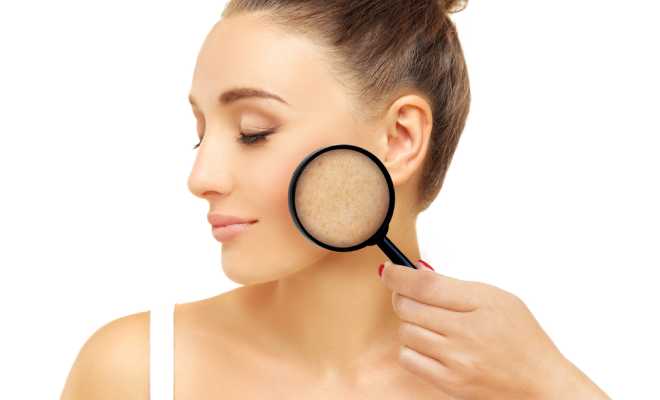There are countless types of skin issues that different people concern themselves with. Often, these go beyond being major vanity concerns but rather, take a toll on people’s self-confidence.
Most likely, you have your own set of skin issues too, and if hyperpigmentation happens to be one of these, then in this article is everything you need to know about hyperpigmentation.
What is Hyperpigmentation?
Hyperpigmentation is a skin condition characterized by the appearance of darker skin relative to the surrounding skin tissues.
There are many types of Hyperpigmentation, The most common kinds are characterized by excessive amounts of melanin, the component of the skin that is responsible for skin pigmentation.
Melanin is formed from the successful delivery of tyrosinase, a pigment regulating enzyme, to the melanocytes, cells that are responsible for producing melanin in the skin.
The amount of melanin in the skin is responsible for the different types of skin pigmentation, including conditions that are characterized as hypopigmentation or, the condition where the skin discoloration makes spots or patches of the skin appear lighter than a person’s natural skin tone.
Dark skin patches are determined by the presence and volume of melanin. However, there are many causes of Hyperpigmentation, both internal and external to your body, that can trigger higher levels of melanin in the skin.
These factors include the following:
Heredity:
- Most especially in the case of birthmarks, and taking into consideration race and natural skin color, some skin types are more prone to photoaging skin compared to other skin tones.
- There are several studies that have compared and contrasted the photosensitivity of different people with different skin colors.
- One such study found that the skin’s photosensitivity is determined by skin color and, in particular, people who have darker skin tones where higher levels of melanin can already be found, are more vulnerable to different types of hyperpigmentation.
Natural Aging:
- Senescence simultaneously affects the efficiency of the body’s functional mechanisms in general, which includes possible irregularities in melanin formation, and even immune response which can also contribute to the formation of dark skin patches.
Excessive and Unprotected Sun Exposure:
- This is, by far, the most common cause of different types of hyperpigmentation issues.
- When UV rays strike the skin, your body automatically responds by producing more melanin and sending these to the surface, in an attempt to rescue your skin from damage.
- This is exactly why your skin darkens when you are sunburned.
Stress and Sleeplessness:
- One of the little-recognized causes of hyperpigmentation on the face is stress which is usually accompanied by sleeplessness.
- A study published in 2014 reviewed and confirmed evidence that a brain-skin connection exists, and that skin conditions can be triggered by stress as part of the body’s immune response mechanisms.
Hormonal Changes:
- Excessive melanin formation can be triggered by hormone fluctuations due to pregnancy.
- This condition causes chloasma, dark underarms, and darker skin on the neck and joints during pregnancy.
Skin Damage:
- As part of your body’s natural mechanism for healing, your body releases more melanin to support skin healing following wound and acne scarring.
- In more medical terms, this is called post-inflammatory hyperpigmentation (PIH). In some cases, the darker skin eventually evens out with surrounding skin. Other times, it doesn’t.
Medications:
- Taking certain drugs, including birth control pills, anti-malarial drugs, and cancer chemotherapy drugs, can also cause a spike in melanin formation.
Diseases and Special Medical Conditions:
- Some of which include skin infections, celiac disease, and Cushing’s disease.
- In which case, a whitening cream, not even a highly potent hydroquinone cream for hyperpigmentation, will suffice to correct dark spots. More attention should be given to the root cause of hyperpigmentation.
Types Of Hyperpigmentation
What are Hyperpigmentation? Listed below are the most common types of pigmentation and the corresponding recommendations on how to treat hyperpigmentation
1. Sun Spots:

Sun Spots – Image/Shutterstock
These are hyperpigmentation on the face but which may also be commonly found on the neck, chest, and hands or, any other part of your skin that is frequently exposed to sunlight.
Other than sun exposure, these spots, also called for solar lentigines, also become a more common sight as skin ages.
To Treat: Hyperpigmentation Treatment that includes anywhere from over-the-counter (OTC) skin brightening products such as retinol to intense professionally administered chemical peels can help lighten your skin gradually.
For a more precise, better-targeted treatment, fractional laser resurfacing is also a treatment option. Oral supplementation or topical application of antioxidants[1] also aids in reversing visible skin damages caused by sun exposure.
Related: How to Get Rid of Photoaging Skin
2. Melasma:

Melasma – Image/Shutterstock
Also termed chloasma, “the mask of pregnancy,” these are uneven patches of light to medium brown skin often showing up on areas frequently exposed to sunlight.
To Treat: These naturally fade following childbirth. For faster skin healing, retinol and hydroquinone creams are possible options or, any hyperpigmentation product for that matter.
Boosting your antioxidant levels can also help your skin heal faster. Plus, wearing sunscreen can help your skin better cope with repairs. In fact, a study published in 2016 showed that regular sunscreen application improved skin texture and tone in just 52 weeks.
3. Freckles:

Freckles – Image/Shutterstock
These are common in fairer-skinned individuals, and may be present at birth or developed as a result of regular or excessive sun exposure. In general, these are caused by UVB damage on the surface of your skin.
To Treat: Since freckles are located in shallow layers, these are relatively easy to fade using products such as kojic acid[2] for hyperpigmentation.
When using hydroquinone cream for hyperpigmentation, make sure you understand the risks, which includes possible increased risk for developing cancers.
4. Post-Inflammatory Hyperpigmentation:

Post-Inflammatory Hyperpigmentation – Image/Shutterstock
This includes post-acne pigmentation. These become more prominent when skin infections, trauma, and other forms of inflammation, including acne, heals.
To Treat: Like age spots, this type of skin darkening issue can be treated with chemical peels.
You can also treat hyperpigmentation with Fade Cream or, use any other hyperpigmentation cream such as Skinceuticals Hyperpigmentation Serum.
5. Seborrheic Keratosis:

Seborrheic Keratosis – Image/Shutterstock
This darkened skin condition appears like a wart although it is completely harmless. This skin condition commonly presents in older people over 40 years of age.
To Treat: Although harmless, these may take a toll on your self-confidence. Treatment options include cryotherapy, cryosurgery, curettage, electrosurgery, excision, or biopsy.
Treatment consideration includes the presentation of the skin condition as well as the severity and area covered.
Beyond Treatment: Prevention
By religiously subscribing to proper habits, these different types of hyperpigmentation can also be corrected as well as prevented from worsening and spreading.
Listed below are the Top 5 tips to help you prevent skin darkening:
1. Have a comprehensive sun care strategy in place. Applying sunscreen on your skin daily is just one way to help protect your skin from damaging UV. You should complement it with proper timing your sun time and wearing appropriate gears and clothing when you’re out in the sun.
2. Treat skin infections, including acne, and damages correctly. When you’re not sure what changes are happening to your skin, ask a medical professional. The sooner that you can appropriately get rid of the inflammation, the less risky it is for you to get dark spots.
3. Practice proper skincare. Know your skin type so you can complement it with the right skincare regimen. Be gentle with your skin. Don’t rub, don’t pick, and don’t scrub vigorously.
4. Check the products that get into contact with your skin. Know what it is you should be looking for in your products as well as the ingredients you should be avoiding. Synthetic fragrances, SD Alcohol, denatured alcohol, and artificial dyes are just a handful of the sensitizing ingredients that are often infused in cosmetics and personal care products. Steer clear of these most especially when you know that you have sensitive or reactive skin.
5. Ask for alternative meds. If you have been given medications that can possibly cause any of the many types of hyperpigmentation, ask your specialist about possible alternatives.
FAQ’s:
Que: How do you get rid of hyperpigmentation?
Ans: Chemical peels, laser therapy, microdermabrasion, or dermabrasion are all options that work similarly to rid skin of hyperpigmentation.
Que: Does vitamin C help with hyperpigmentation?
Ans: Yes, it helps fade hyperpigmentation.
Que: Can hyperpigmentation be removed?
Ans: Hyperpigmentation is a harmless skin condition that people can get rid of using removal techniques such as cosmetic treatments, creams, and home remedies.
Que: How to prevent hyperpigmentation?
Ans:
- Avoid direct sunlight.
- Use a hat.
- Apply SPF.
- Limit touching your skin.
Conclusion
Hyperpigmentation marks are skin issues that can literally put your face on the line. While these concerns can appear bothersome, treatments and procedures exist to make your skin condition appear much better than you ever thought possible.
Stop worrying and start contemplating on the treatment course that suits your personal preferences and your resources.
 By Wendy Gould
By Wendy Gould





